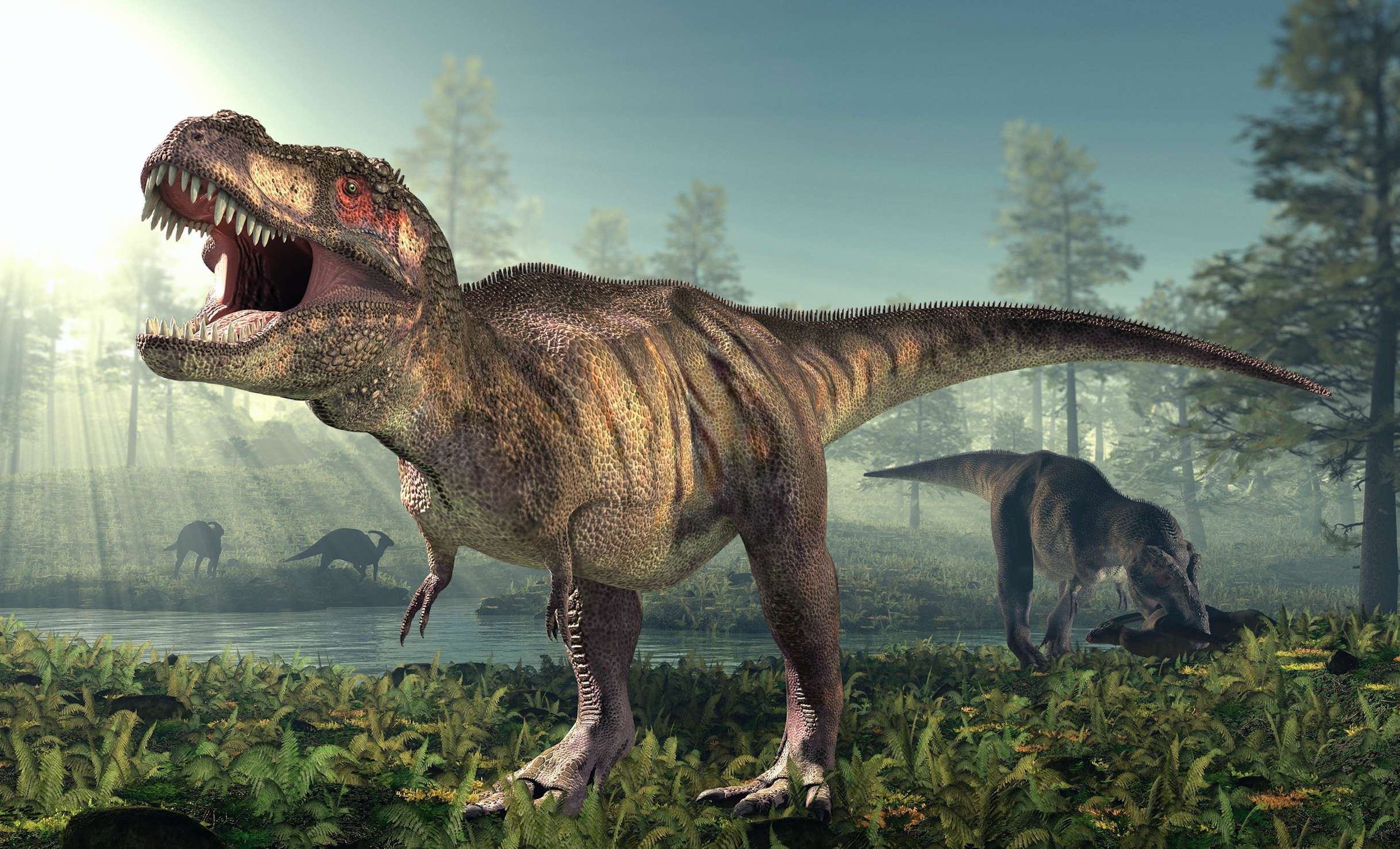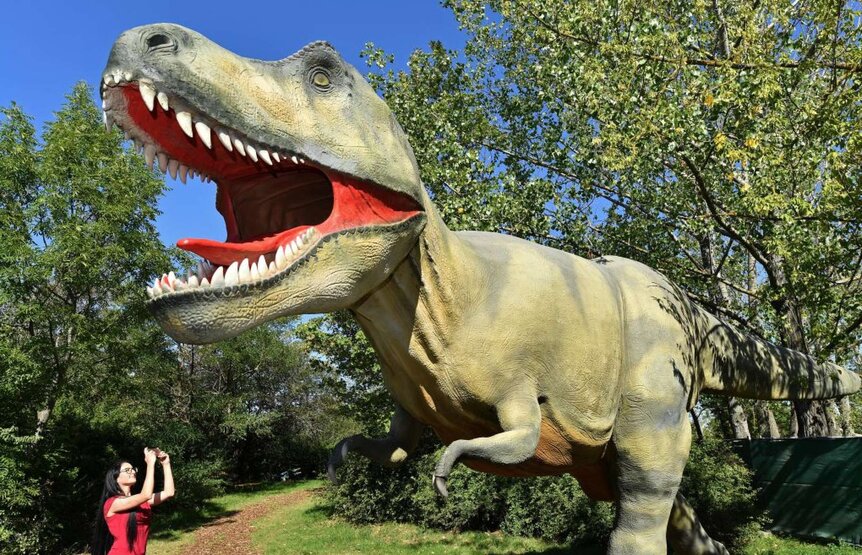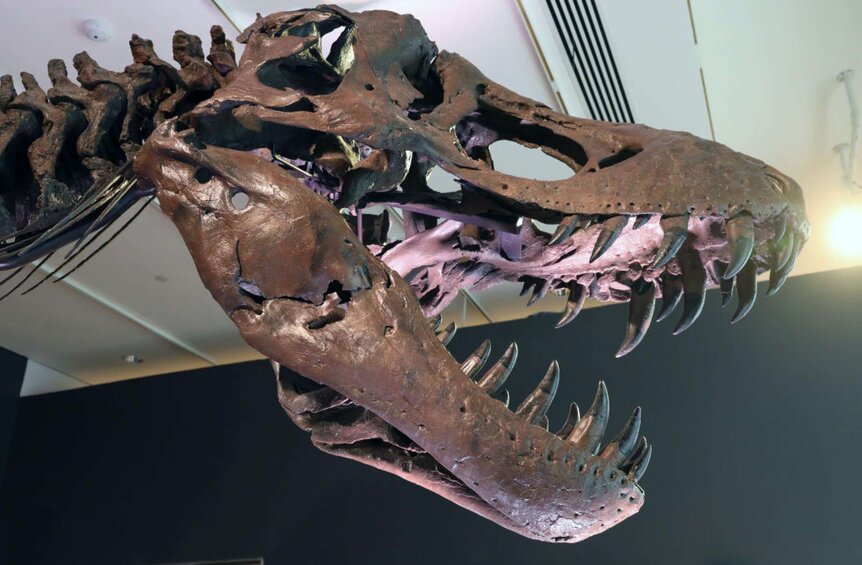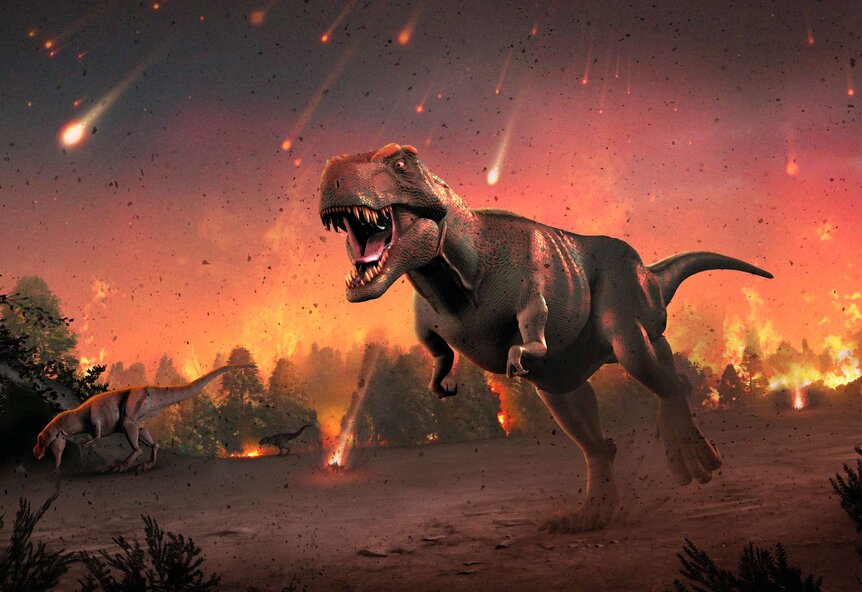Create a free profile to get unlimited access to exclusive videos, sweepstakes, and more!
Paleontologists believe billions of T-rexes once roamed North America

A pioneering new study orchestrated by Professor Charles Marshall of the University of California Berkeley has provided convincing evidence that about 2.5 billion Tyrannosaurus rex dinosaurs once prowled prehistoric Earth in the Cretaceous Period.
For decades the question has been posed as to roughly how many of these iconic predators existed in North America throughout their two-million-plus-year reign in the region now recognized as the western United States, where fossils are concentrated in Montana and Wyoming. Calculating out the numbers for long-extinct animals poses a number of paleontological obstacles not lost on the acclaimed scientist.
“It was exciting to use our exceptional knowledge of T. rex to come up with that number," Marshall tells SYFY WIRE. "The key step was using the strong relationship among living species between body weight and the number of individuals that can be supported per square mile; there are fewer bigger animals in a given area. It turns out we can estimate the weight of T. rex, and so estimate its population density, which when multiplied by the geographic area it lived in, gives the total number alive at a time.”
Marshall and his students presented their findings last week in the online journal, Science. Their estimates figure that approximately 20,000 adult T. rexes were alive on the continent at any given time, with an error margin of a factor of 10. By stretching that figure out over the entire span of the meat-eaters' rule, the numbers amount to a staggering 2.5 billion beasts that lived and died in that period.
Marshall is director of the University of California Museum of Paleontology, the Philip Sandford Boone Chair in Paleontology, and a UC Berkeley professor of integrative biology who took up the challenge with enthusiasm.
“The project just started off as a lark, in a way,” he explained further in a University of California press release. “When I hold a fossil in my hand, I can’t help wondering at the improbability that this very beast was alive millions of years ago, and here I am holding part of its skeleton — it seems so improbable. The question just kept popping into my head, ‘Just how improbable is it? Is it one in a thousand, one in a million, one in a billion?’ And then I began to realize that maybe we can actually estimate how many were alive, and thus, that I could answer that question.”
No doubt this is still a broad estimate but it does provide a baseline from which future research can be derived with the initital heavy lifting already accomplished. With a likelihood of nearly 20,000 adults stomping around primeval territory at any particular time, the study provides a 95% confidence gauge anywhere from 1,300 to 328,000 creatures. This means that the total number of "thunder lizards" that breathed over the species' lifetime would then range from 140 million to 42 billion.
Even employing Monte Carlo computer simulations using repeated random sampling to garner uncertainties in the equation, Marshall agrees that there are questions centered around the precise nature of the T. rexes' ecology, including just how warm-blooded T. rex really was.
Their research paper used data published by John Damuth of UC Santa Barbara which relates body mass to population density for living animals, a relationship called Damuth’s Law.
“Our calculations depend on this relationship for living animals between their body mass and their population density, but the uncertainty in the relationship spans about two orders of magnitude,” Marshall said. “Surprisingly, then, the uncertainty in our estimates is dominated by this ecological variability and not from the uncertainty in the paleontological data we used.”
To reach their conclusions, the UC Berkeley researchers poured over existing scientific literature to estimate that the T. rex's age at maturity was 15.5 years with an average ecological body mass of 5.2 tons, with some large specimens reaching a hefty 7 tons. Calculations were also made considering that each generation endured for around 19 years and lived in an average population density of roughly one dinosaur for every 100 square kilometers.
By estimating its total geographic range of about 2.3 million square kilometers, and noting that the species survived for nearly 2 1/2 million years, they ended up counting a standing population of 20,000. When factoring in the 127,000 generations that these notorious brutes lived, it adds up to approximately 2.5 billion individuals total.
“There are about 32 relatively well-preserved, post-juvenile T. rexes in public museums today,” Marshall added. “Of all the post-juvenile adults that ever lived, this means we have about one in 80 million of them.
“If we restrict our analysis of the fossil recovery rate to where T. rex fossils are most common, a portion of the famous Hell Creek Formation in Montana, we estimate we have recovered about one in 16,000 of the T. rexes that lived in that region over that time interval that the rocks were deposited. We were surprised by this number; this fossil record has a much higher representation of the living than I first guessed. It could be as good as one in a 1,000, if hardly any lived there, or it could be as low as one in a quarter million, given the uncertainties in the estimated population densities of the beast.”
Marshall welcomes feedback and contradictions from his esteemed colleagues on his estimates, but he stands by the team's calculational framework for predicting extinct populations that will no doubt prove instrumental in deriving population data for more fossilized species.
“In some ways, this has been a paleontological exercise in how much we can know, and how we go about knowing it,” he concluded. “It’s surprising how much we actually know about these dinosaurs and, from that, how much more we can compute. Our knowledge of T. rex has expanded so greatly in the past few decades thanks to more fossils, more ways of analyzing them, and better ways of integrating information over the multiple fossils known.”

















